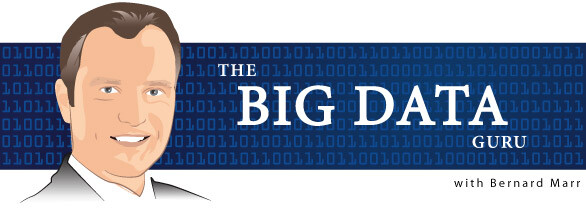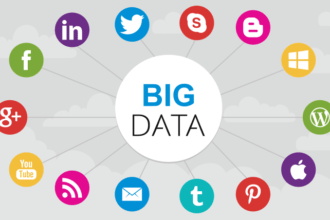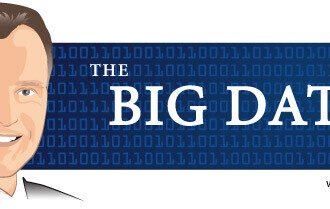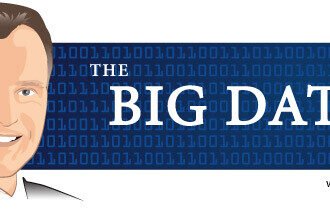

Big data is used in many different parts of organizations to change decision-making and the generation of data-driven insights. In my previous article ‘The 9 Amazing Ways Big Data is Used Today to Change The World’ I outline the key big data use cases I see in practice and one of the areas I’d like to hone in on is how big data is changing people management.
People management (or human resources) teams are already data rich – they have a lot of data on things like staff turnover, recruitment channels, training and development, staff satisfaction and absenteeism. In addition to these traditional data sets, companies can now collect so much more data, data that wasn’t available before, like: capturing employees on CCTV, taking screenshots when staff are using company computers, scanning social media data, analyzing the content of emails, and even monitor where they are using the data from geo-positioning sensors in corporate smart phones.
Even though HR teams already hold a lot of data, many fail to turn this data into valuable insights and ascent of big data together with the new possibilities of collecting and analyzing data won’t make this any better. However, I also feel that many people management teams are on the verge of leveraging data and analytics much better, so let’s explore the opportunities here.
Companies are nothing without the right people. People with the right skills and talents make all the difference and will give companies the competitive edge they need to succeed today and in the future. It is therefore absolutely vital that companies manage their people as best as they possibly can in order to e.g. find, recruit, retain and develop the right talent.
I believe that companies can gain mouth-watering benefits when they use big data analytics tools to improve their people management, especially if they enrich their existing data analysis with the analysis of larger, unstructured data sets. Let’s look at some real examples of how companies are using advanced analytics and big data to gain new people related insights:
- A construction company is currently experimenting with using wearable devices to collect and analyze data on employee’s body functions. Many of their employees work in dangerous environments such as highways or high-rise buildings and the aim of the analytics is to identify ways to detect fatigue and stress levels. This would allow the company to put systems in place so they can pull people off dangerous jobs if fatigue and stress levels exceed certain levels.
- Most employees don’t like completing staff surveys. One of my clients is currently experimenting with analytics tools that scan and analyze the content of emails sent by their staff as well as the social media posts they make on Facebook or Twitter. The aim is to develop tools to understand the levels of staff engagement without the need for the traditional staff surveys.
- Another client of mine wanted to recruit self-driven people that are able to take initiative. By analyzing different data sets from the type of people they wanted to recruit and those they wanted to avoid, the company found that the browser used to complete the job applications was a strong predictor for the right candidate. Those candidates that used browsers that were not pre-installed on their computers and instead had to be installed separately (such as Firefox or Chrome) tended to be better for that particular job.
- Big Data analytics will transform the way companies find and recruit the right talent. For example, one retail company uses social media network analysis combined with other analytics tools to find the right candidates for their job. Simply by analyzing social media profiles they can accurately predict the level of intelligence as well as the emotional stability of potential candidates. Other companies use Moneyball-type analytics to find talent in unexpected areas. For example, one of my clients found that call center sales staff with a criminal record performed better than those without a criminal record and that sales people with more Facebook connections performed poorer than those with few connections.
- Most employees dread the regular performance appraisals and in most cases the processes companies use to complete these reviews are clunky. A number of companies are now experimenting with the idea of crowdsourcing performance reviews taking into account data from many sources, including social media.
- Another client of mine is currently fine-tuning their algorithm to predict the likelihood of staff turnover among their high-potential employees. The company was keen to detect predictive signals so it can intervene early and not wait until an employee hands in his or her notice. Using a combination of various behavioral and text / sentiment analytics the company is now able to identify candidates that are considering leaving long before they would consider handing in their notice.
Different people management
The data and analytics revolution has some serious implication for how people management is done in companies. In order to stay on track companies must make sure that they have the right skills, capabilities and technology in place to leverage people data and analytics. There already is a global shortage of people with business analytics and data science skills, and this shortage is especially noticeable among HR teams. I believe big data can make a real impact in the area of people management, but only if companies invest in building the big data and analytics skills and expertise now.
——–
Check out the other posts in my ‘Big Data Guru’ column and feel free to connect via Twitter, LinkedIn, Facebook and The Advanced Performance Institute










